한식 읽기 좋은 날
The potential of Hansik Recognized Faster Worldwide
HANSIK Report from Overseas
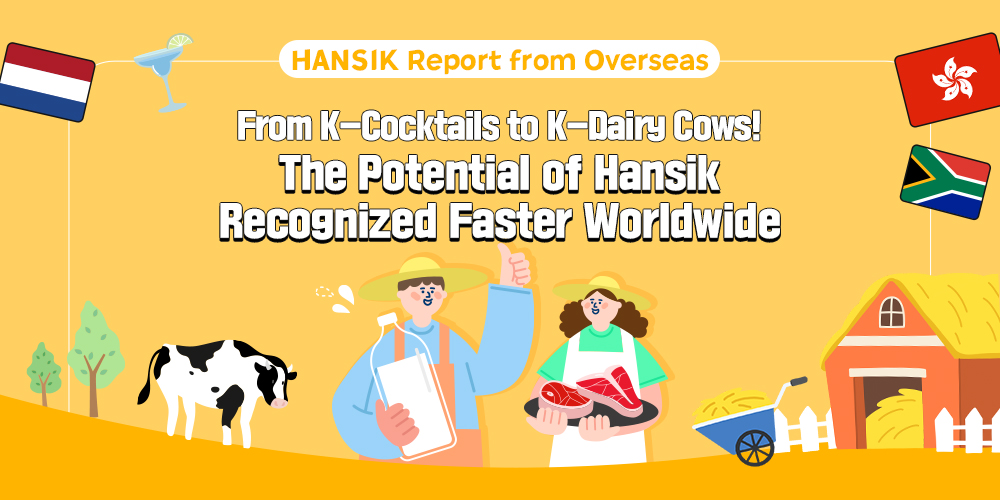
As time passes, the popularity of Korean cuisine continues to gain traction. Beyond the well-established fame of kimchi and ramyeon, there is growing recognition abroad for new charms and the potential within Korean food. It's always refreshing to discover that dishes and products, both familiar and unexpected, are being embraced and loved in distant corners of the world. Let's explore some aspects of Korean cuisine that have captivated hearts worldwide recently.
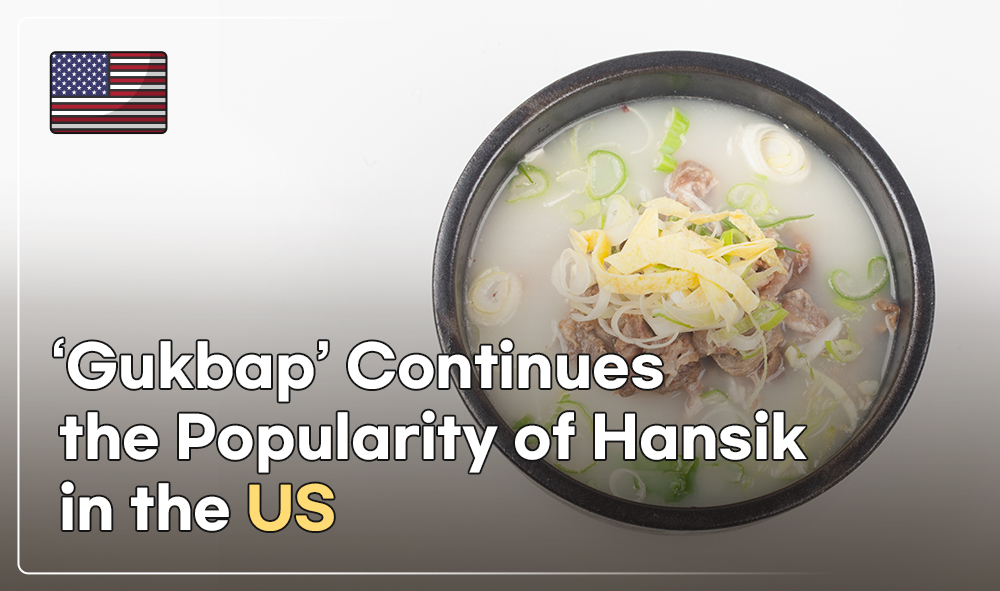
‘Gukbap’ Continues the Popularity of Hansik in the US
Recently, a Korean restaurant's pork bone soup, specifically "dwaejigomtang," was selected as one of the "Top 8 Dishes in New York City for 2023." 'Okdongsik,' located in Manhattan, New York, achieved this recognition within a year of entering the New York food scene. Among the 34,000 restaurant menus in New York City, The New York Times (NYT) highlighted this gukbap (rice soup), describing it as a “taste that one wouldn't get tired of even if eaten every day, providing comfort on days with bad news.” The restaurant is currently experiencing intense reservation battles among locals, and as has received praises from major local media outlets and food critics.
Notably, among the five best overseas Korean restaurants designated by the Ministry of Agriculture, Food and Rural Affairs in the latter half of this year, there is also one that specializes in traditional Hansik, including gukbap (rice soup). Considering the remarkable success gukbap, there is growing anticipation that, following the hot trend of Korean-style gimbap that heated up the United States last year, gukbap might continue this trend.

101 K-Dairy Cows Sent Nepal to Boost Nepalese Dairy Industry
Recently, 101 Korean dairy cows were sent to Nepal as part of a collaborative effort between the Ministry of Agriculture, Food and Rural Affairs and the international development organization Heifer Korea. The initiative aims to support the improvement of Nepal's dairy farming productivity. Since the Korean War, South Korea has received international assistance to rebuild its dairy farming industry, and it has now become the world's fifth-largest milk-producing country. The significance of this international aid lies in the fact that South Korea, once a beneficiary, has grown into a supporting nation, giving back to neighboring countries.
Moreover, this project goes beyond simply sending dairy cows; it includes follow-up measures such as dispatching experts and transferring technology. It is hoped that the K-dairy cows sent to Nepal will contribute to the country's dairy industry, alleviate poverty, and bring about a miraculous improvement in the lives of the local people.
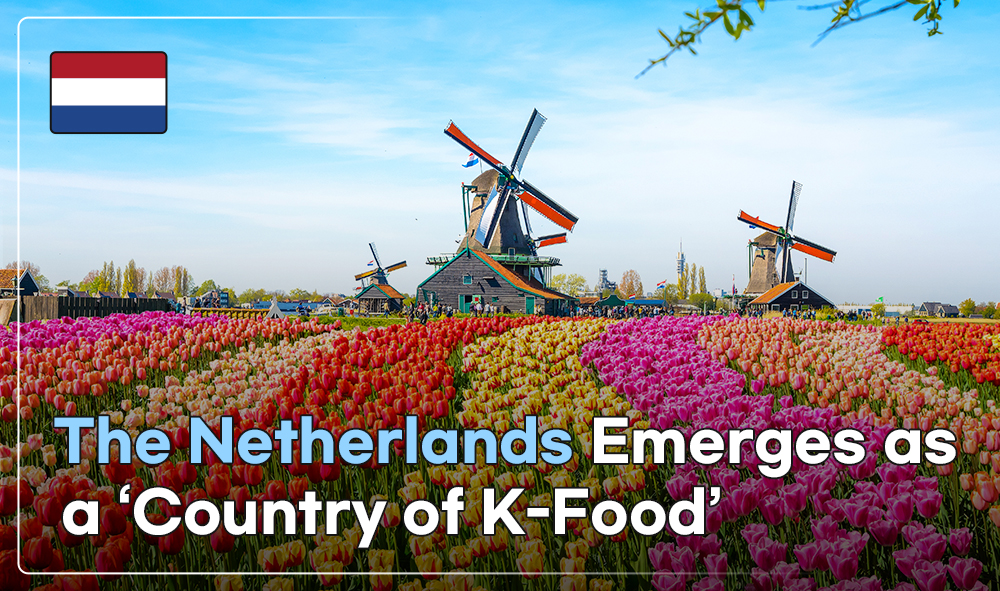
The Netherlands Emerges as the 'Country of K-Food’
The Netherlands, known for its role as a gateway for K-Food exports to Europe, has emerged as one of the top Korean food export destinations alongside the traditional K-Food export countries such as the United States, China, and Japan. The country’s position as a significant player in “transshipment trade” also contributes to this ranking, but as Korean food exports to Europe continuously increase, the demand in the Netherlands has also seen an increase.
Evident of its popularity, recently, it has become increasingly easier to find Korean food stores or restaurants selling Hansik even in smaller cities. Given the country's traditional focus on agriculture, there is growing anticipation that interest in Hansik, particularly dishes centered around vegetables like kimchi, will continue to rise. The Netherlands, often referred to as the "Land of Windmills" to us, might soon gain an additional nickname as the "Land of K-Food."

Hong Kong Charmed by the Unique Appeal of K-Cocktails
The elevated status of Hansik has now extended to Korean cocktails. At the 'Asia's 50 Best Bars 2023' awards ceremony held in Hong Kong last year, six Korean bars secured spots among the top 50, marking a record high and showcasing improved rankings for previously selected bars compared to a year earlier.
These selected bars present creative cocktails that reinterpret Korean ingredients, ranging from jjondeugi (traditional chewy snack) to gochutgaru (chilli pepper powder). The K-Cocktails effectively capture the increased interest and appreciation from foreigners for uniquely Korean elements. Recently, in neighborhoods like Sinsa-dong and Seochon, frequented by the younger generation, it has become easier to find cocktails made with traditional Korean ingredients and spirits. With the growing variety of cocktails that embody the charm of Korea, we hope there will be more opportunities for people to enjoy them.
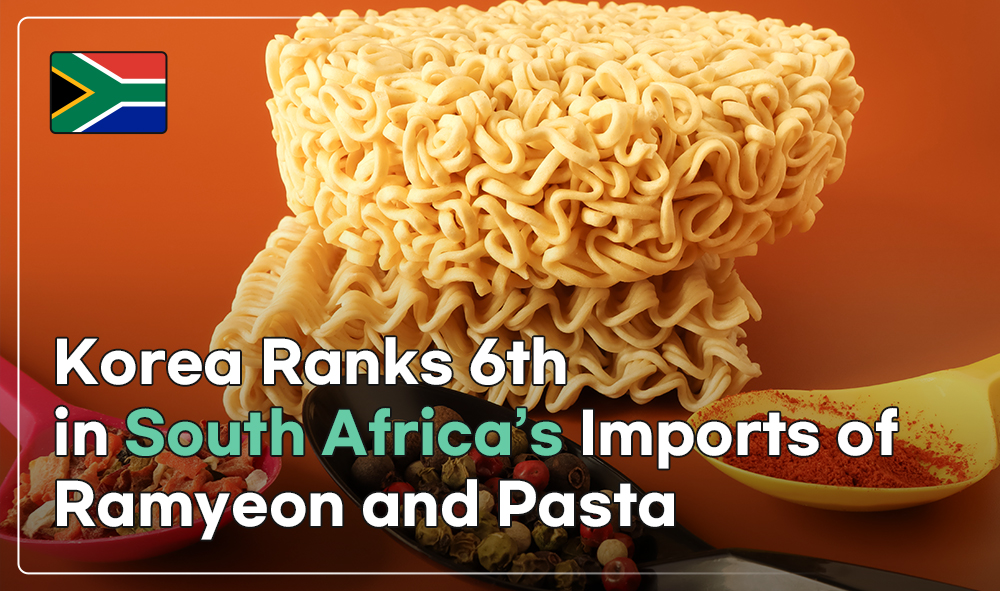
Korea Ranks 6th in South Africa's Imports of Instant Noodles and Pasta
Recently, South Korea has secured the 6th position in terms of import value for ramyeon (instant noodles) and pasta in the total import amount for South Africa. While the import value hasn't consistently followed an upward trend over the past few years, the expanding presence of Korean food in South Africa is a positive consideration. In fact, there is a growing interest in Korean convenience foods, including ramyeon, among local consumers in South Africa.
South African consumers are highly sensitive to prices due to internal and external factors. Recently, there have been cases where consumers have shifted their preference to affordable staple foods, such as pasta or ramyeon, which can be purchased in bulk. In this scenario, Korean food, known for its competitive pricing, stands out as an attractive option among various noodle and pasta products available in South Africa.
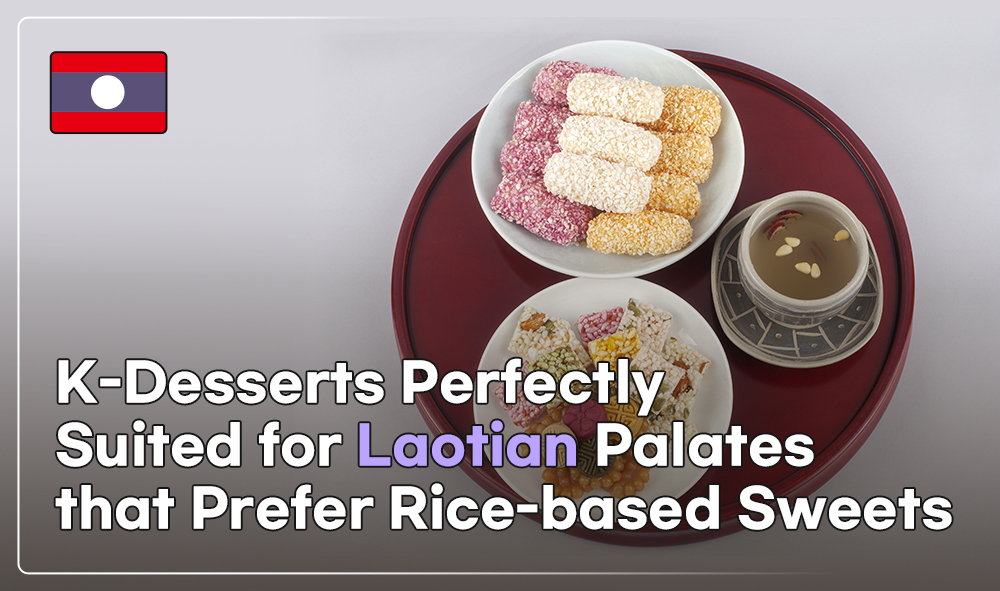
K-Desserts Perfectly Suited for Laotian Palates that Prefer Rice-based Sweets
To Laotians, desserts are not just post-meal treats but also serve as meal alternatives, preparations for events, and congratulatory gifts. The culture of attributing significance to desserts and holding them in special regard is similar to that of Korea. Most Laotian desserts are made from rice, glutinous rice, or rice flour, creating a high similarity in taste with Korean desserts. This implies favorable conditions for Korean desserts to enter the Laotian market.
Furthermore, with the influence of social media, Laos has shown an increasing interest in trying a variety of global flavors and the positive image of K-desserts adds to the appeal. With Korean restaurants gaining traction and Korean culture spreading across various aspects in Laos, targeting the dessert market as the next objective seems promising.
Reference
KOTRA Overseas Market News Korea Economic Daily <[Thousand Word Column] Beyond Gimbap to Gukbap>
Edaily <101 Korean Cows Going to Nepal...Supporting the Development of Nepalese Dairy Industry>
JoongAng Ilbo <Enchanted by Kimchi? The Secret Behind the Surge in K-Food Exports in the 'Semiconductor Country' Netherlands>
The Korea Herald <[KH Explains] How Netherlands has become a top K-food destination>
JoongAng Ilbo <The World Intoxicated by 'K-Cocktails' featuring Jjondeugi and Gochutgaru>
Edaily <Korean Ramyeon Expanding to South Africa... "Price Competitiveness is the Key to Export" [Food World]>

 한국어
한국어
 English
English






